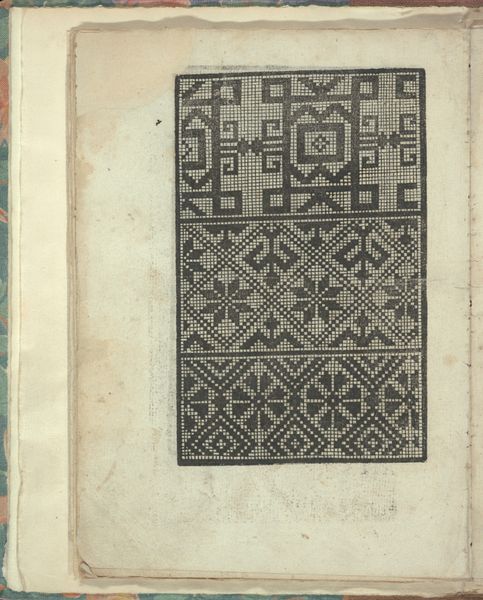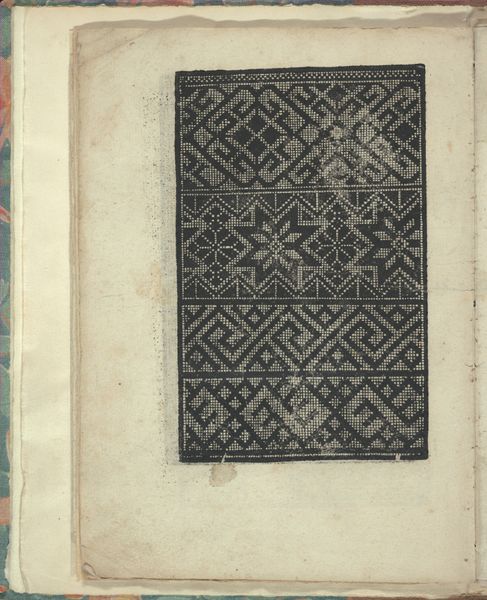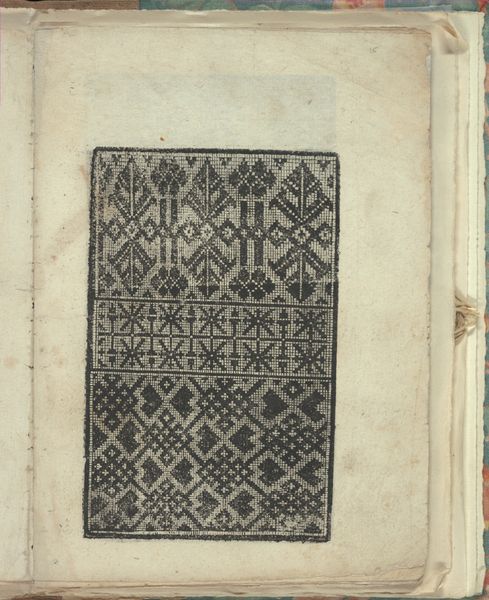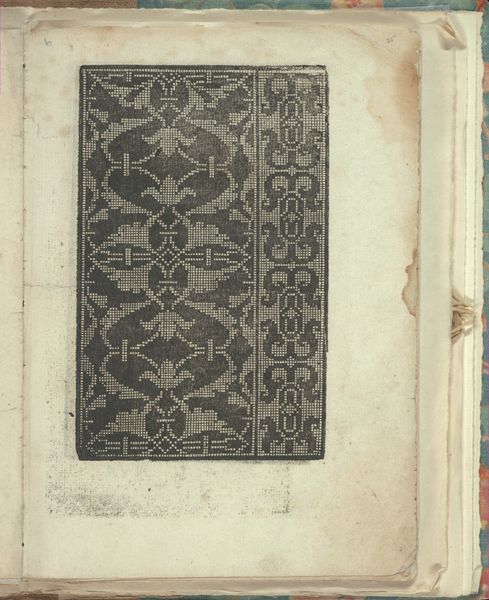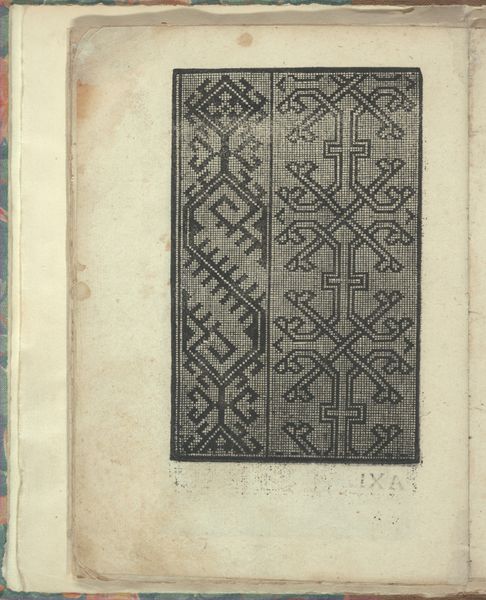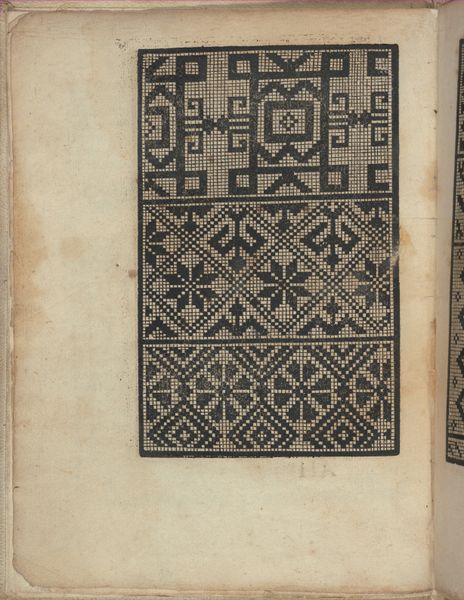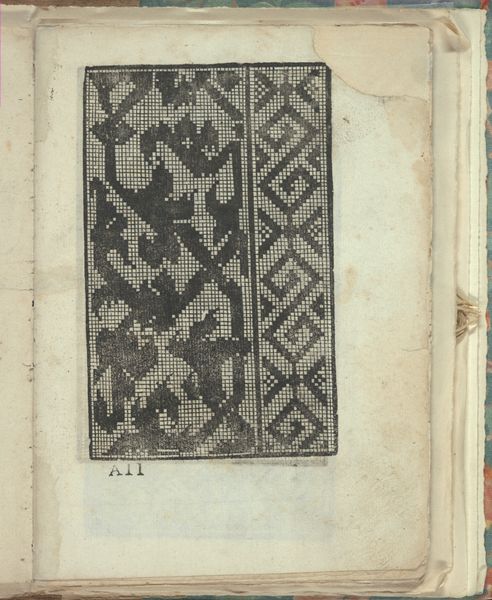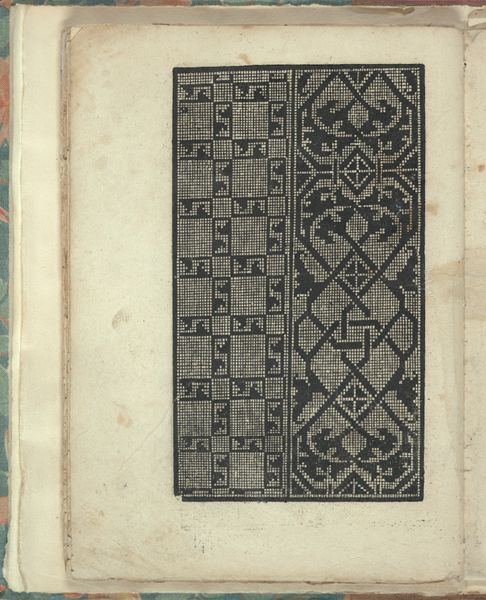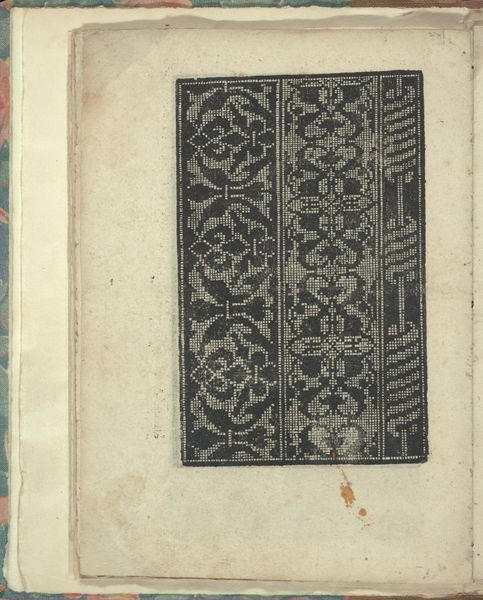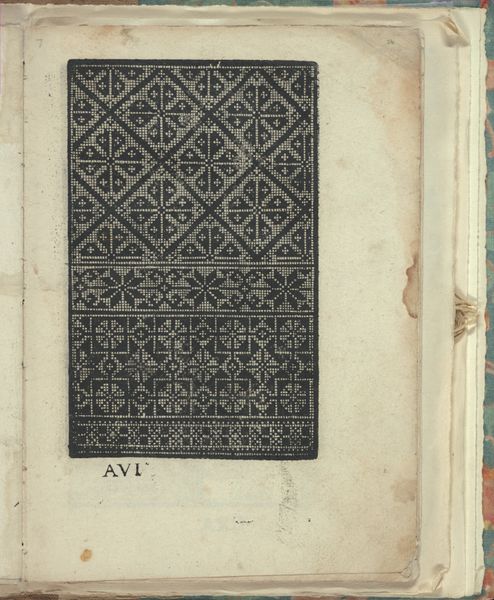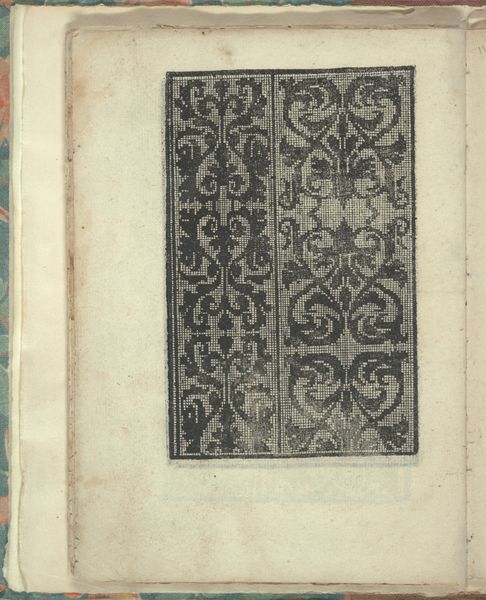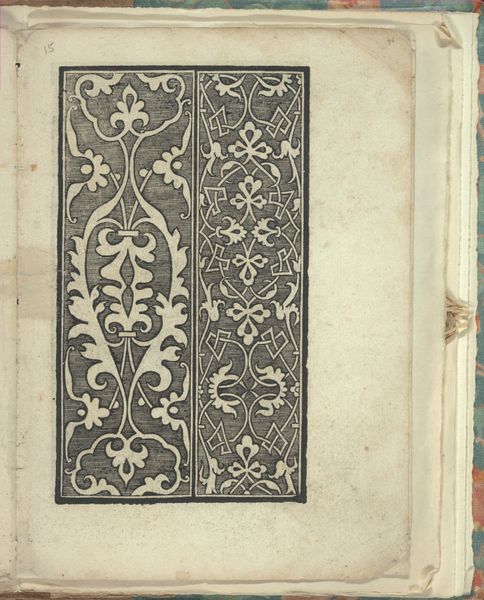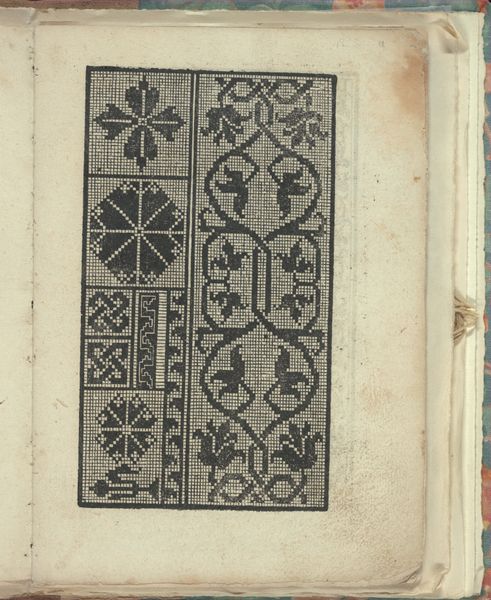
Opera Nova Universali intitulata Corona di racammi, page 29 (recto) 1530
0:00
0:00
drawing, graphic-art, ornament, print, paper
#
drawing
#
graphic-art
#
ornament
#
toned paper
# print
#
book
#
paper
#
11_renaissance
#
geometric
#
italian-renaissance
Dimensions: Overall: 8 7/8 x 6 7/8 in. (22.5 x 17.5 cm)
Copyright: Public Domain
Curator: The page before us is entitled *Opera Nova Universali intitulata Corona di racammi, page 29 (recto)*, crafted in 1530 by Giovanni Andrea Vavassore. This piece, a print drawing on toned paper, is housed in the Metropolitan Museum of Art. It offers two striking patterns reminiscent of intricate lacework. What strikes you most immediately? Editor: Well, formally, I am captivated by the graphic power of these geometric patterns. The sharp contrast between the black ink and toned paper creates a visually stimulating tension. It's a very balanced, if somewhat rigid, composition split right down the middle. Curator: Indeed. Looking deeper, one might interpret these dense patterns as symbolic of the intricacies of social fabric during the Renaissance. Ornamentation like this acted as visual currency, immediately conveying status and affiliation within certain cultural echelons. This page comes from a book meant to provide patterns for embroidery, an incredibly gendered form of labour. Editor: I am not so sure about this immediate correlation to social status or societal gender structures, but you certainly touch on interesting points of interpretations that go beyond the pure forms. As a pattern, I'm quite drawn to the geometric logic at work, and can easily picture the practical application of the forms onto tapestries or clothing. It speaks of artisanal craft with great effect. Curator: Agreed, but the patterns' origins aren't just decorative; they carry encoded visual language related to specific family lineages, guilds, and social standing within the Renaissance. The act of recreating this very design would imbue these new objects with associated prestige, reaffirming cultural memory. Editor: Ah, that is very compelling! And by acknowledging and even participating in these societal codifications, they are reinforced as truth by association. In this light, the design’s rigidity really does reflect a societal immobility and rigidity in belief! Well, seeing beyond just the formal arrangements, my eyes have been opened to some more potential implications and inferences behind their forms. Curator: Precisely! By examining symbolic potential, we can excavate so many hidden layers within art. We move from observation to informed participation, where the art speaks far beyond mere aesthetic preferences! Editor: Indeed, by discussing this graphic page of ornament, our observations went beyond formalism, towards an almost archaeological unpacking of memory, tradition, and communication, both expressed and, indeed, concealed.
Comments
No comments
Be the first to comment and join the conversation on the ultimate creative platform.
